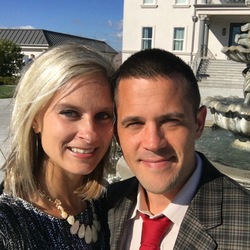Anderson Valley 101: The Northern Border of California Pinot
Lichen Estate
Anderson Valley Pinot Noir 2014
Douglas & Ana Lucia Stewart founded Breggo in 2005 before selling the brand four years later. They kept their estate property though, and from it the Lichen label was born. Their 2014 offers amid-weight expression of Anderson Valley Pinot that balances its fleshier frame with aromatic lift. Notes of hibiscus and pressed red rose meet sappier, medicinal tones on the palate - rosemary, underbrush, pomegranate and raspberry liqueur. — 7 years ago
Navarro Vineyards
Cluster Select Riesling Anderson Valley 2016
Is this California’s greatest dessert wine? Every time I enjoy a glass I’m convinced it just might be (and if not, Navarro’s Cluster Select Gewürztraminer or Muscat make a compelling case as well). With laser sharp acidity and a surgical precision, the wine accomplishes a captivating balance between cool, wet stone flavors coupled with a more luscious cornucopia of fruit - ripe green apple, pear, and guava. Slightly viscous and entrancingly long - if the Mosel were found on California’s North Coast... — 7 years ago


Goldeneye (Duckhorn Vineyards)
Estate Grown Gowan Creek Vineyard Pinot Noir 2014
Goldeneye is the Anderson Valley branch of Napa’s Duckhorn, and Gowan Creek has routinely been a favorite among their single vineyard Pinots. Brooding and opulent, it matches blackberry, anise tones with more earthen flavors - tilled soil and mushroom caps. Meaty and gratifying. — 7 years ago
Scharffenberger
Brut Excellence Mendocino County Sparkling Wine
Roederer Estate and Scharffenberger both call Anderson Valley home and together yield some of California’s most consistently delicious and affordable sparkling wines. Of the couple, Scharffenberger vinifies rounder, more lush wines. Flavors of ripe pear skin, white rose, and baked apple find their footing against a backdrop of yeast, cheese rind, and patisserie in the image of Champagne. The perfect wedding reception wine or Tuesday night sparkler for its tremendous quality to cost ratio. — 7 years ago
Breggo Cellars
Anderson Valley Pinot Gris 2009
Alsace in America. Ripe, fleshy, and oxidative after 9 years - it tastes of gooey peach skins, mango peels, lychee, crystallized honeycomb, and macadamia nuts. Enough residual sugar to pair beautifully with dessert, but equally alluring earlier in a meal. Breggo was sold to Napa producer Cliff Lede in this same year, where it was later renamed FEL. — 7 years ago
Lichen Estates
Les Pinots Noir & Gris 2015
A quirky white wine from Lichen, this is actually a blend of 60% Pinot Noir with 40% Pinot Gris. Juicy and delightfully gratifying - it tastes of ripe pear, green apple skin, and rounded wet stones. Generous and ample, the wine is immeasurably easy to drink. — 7 years ago
FEL Wines
Ferrington Vineyard Pinot Noir 2014
From one of Anderson Valley’s most pedigreed sites, FEL achieves a beautiful, broad expression of the Ferrington Vineyard. Notably, FEL, owned by Napa’s Cliff Lede, purchased the famous Savoy Vineyard. This bottling, however, charms with strokes of pomegranate, cola, sarsaparilla, chai, and black cherry concentrate. Medicinal and palate-coating, the wine lingers with autumnal spice. — 7 years ago
Phillips Hill
Valley Foothills Vineyard Gewürztraminer 2016
I so rarely encounter a great Gewürztraminer from outside Alsace, and when I do, it’s most likely from the Anderson Valley. This Phillips Hill bottling is no exception. Striking in its aromatic intensity - dried ginger, rose water, thyme, pine sap, crushed stones, and white pepper - the wine is vinified nearly bone dry, resulting in a taut, lean structure that moves with spritely dynamism. The floral and spice tones meet fruitier flavors on the palate - white peach and lemon soda. A far cry from the California Chardonnays and Sauvignon Blancs that dominate the Golden State’s white wine scene. — 7 years ago
Roederer Estate
Estate Bottled Anderson Valley Brut Rosé Blend
One of the most consistent values in sparkling wine from the famed Champagne house Louis Roederer's Anderson Valley label. Despite its Champenois pedigree, it’s broad, juicy berry flavors are all California. Red currants, muddled strawberry, pressed mint, grapefruit pith, thyme and crushed stones. Endlessly pleasurable. 56% Pinot Noir, 44% Chardonnay — 7 years ago






Bryce Wiatrak

The Charles Family had been growing grapes for several years before founding their Foursight label in 2006. The name refers to the four generations who've worked this Anderson Valley land, where they grow Pinot Noir, as well as Sauvignon Blanc and Sémillon, which are far less common for the area. Foursight's 2015 Charles Vineyard Pinot Noir exudes the red-fruit profile typical of this southern edge of the Anderson Valley - wild strawberry and cranberry meet Christmas spices and ginger.— 7 minutes ago — 7 years ago